Petunias can suffer if they are overwatered and there are 7 signs to look out for. Signs of an overwatered petunia include yellowing leaf tips, green veins and yellow leaves, brown leaves, dull and moldy flowers, mushrooms growing from the soil and mold.
My petunias had recently suffered from overwatering due to heavy rains. These are planted in raised garden beds and pots. This problem is easily solved once you identify it.
This article will explore all you need to know to work if your petunia is overwatered and easy solutions.
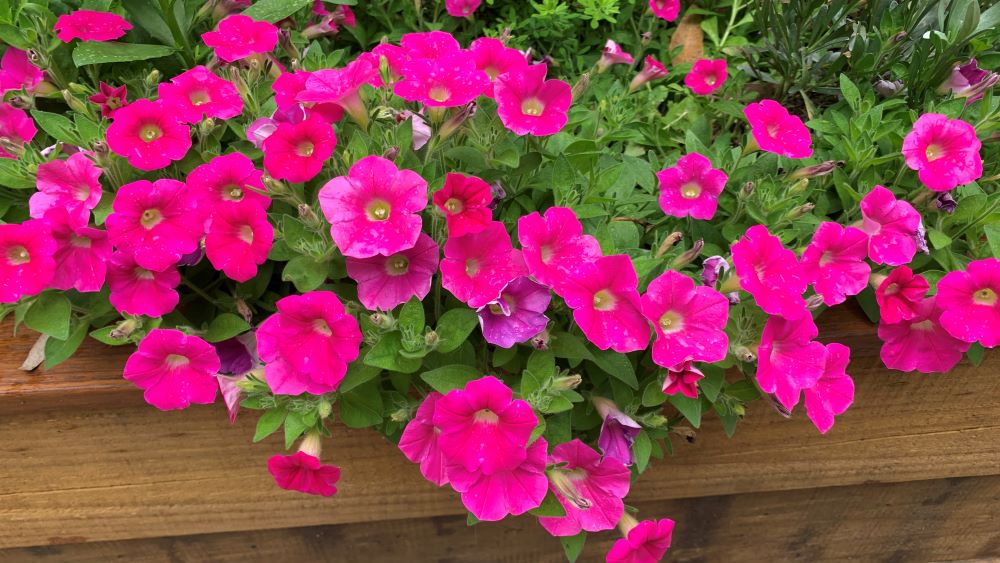
1. Yellowing leaf tips
A sign that your petunias are getting to much water is when the leaves go yellow on the tips. This is a sign that the plant is not getting enough nitrogen. This can happen when the excess water washes the nitrogen out of the soil or if the roots have suffered from rot.
Root rot happens when a fungus grows on the roots stopping them from absorbing nutrients.
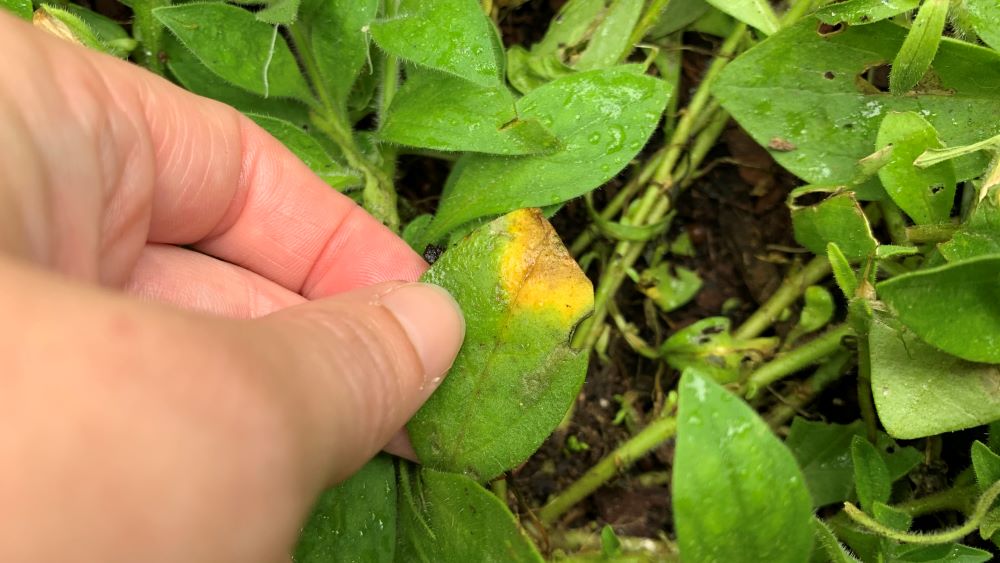
Solution
The first step is to reduce your watering but if the excess water is coming from rain, move potted petunias into a protected position out of the rain. The next is to give the petunia some extra nitrogen. Give it a quick dose of nitrogen by adding some liquid fertilizer that contains nitrogen.
I also like to add pelleted chicken manure which will slowly release nitrogen to the petunia. This will feed it over a longer period and help to replace the nitrogen lost from overwatering.
2. Green leaf veins and yellow leaves
Another sign that your petunia is overwatered and is missing key nutrients is when the leaves turn yellow and the veins stay green. This is a sign of micronutrient deficiency, particularly iron.
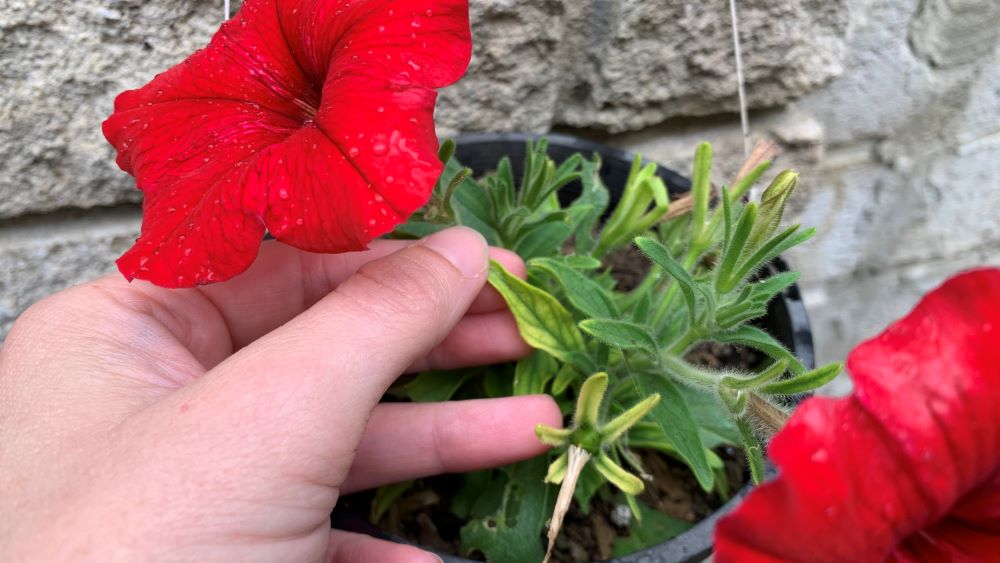
Solution
Mix together a powder of iron chelates in water and give it to your petunia. This will help to replace the iron washed away by overwatering. This can also help to improve poor quality soils. Only add iron if your plant shows signs of deficiency.
3. Drooping leaves
Another sign that your petunia is overwatered is drooping leaves. The leaves can droop when the extra water reduces the oxygen and nutrient level of the soil. When leaves droop it is time to slow down your watering.

Solution
For petunias planted in pots, raised beds or in the ground add mulch around their base. This will help to absorb extra water from the rain and slowly release it to the plant. Slow down your watering schedule and aim to have the soil most but not wet.
4. Brown leaves
Brown leaves are a sign that petunias have been overwatered for a longer period. After the leaves turn yellow or droop they can turn brown if the damage continues.

Solution
Once the leaves have turned brown make sure you have the plants surrounded by mulch, and reduce your watering. Allowing the plant time to dry out slightly is important and you can give it some liquid nitrogen fertilizer. After a week add some pelleted chicken manure and your petunia should show signs of recovery.
5. Dull and moldy flowers
Another sign of overwatering is when the flowers go dull and moldy. This is different to the natural die back of flowers after they have finished. The flowers will look dull and can even grow blue mold on the petals.
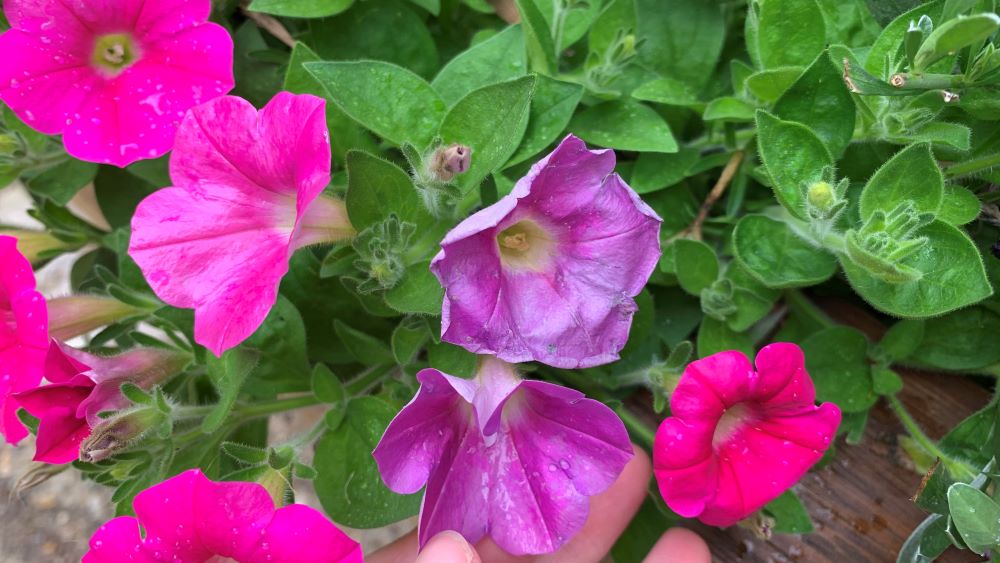
Solution
Reducing the amount of water the plant is the best way to deal with this problem. You can trim off the damaged flowers with sharp secateurs to give the plant more room to grow new healthy flowers. For my petunias that were getting too much water from rain, I am just allowing the plant to naturally dry out before watering again.
6. Mushrooms or toadstools are growing from the soil
Another sign that petunias are getting too much water is if you see mushrooms growing from the mulch or soil. Mushrooms can grow when the soil is wet and the humidity is high.

Solution
You can remove mushrooms from the soil gently with a trowel. The mushrooms themselves will not damage the plant but can look ugly. I like to remove the mushrooms or toadstools to give the petunia more room to grow.
7. White mold on the soil
Very wet potting soil can develop white mold on the surface. This mold is not harmful to the plant but is a sign that the plant is getting too much water.
Solution
Cover the soil with mulch. You can use bark mulch or straw to help to absorb extra water. Reduce your watering and move the pots into a protected position if you are expecting more rain. Add some slow release fertilizer in spring to boost the nutrient level and help the plant to recover.
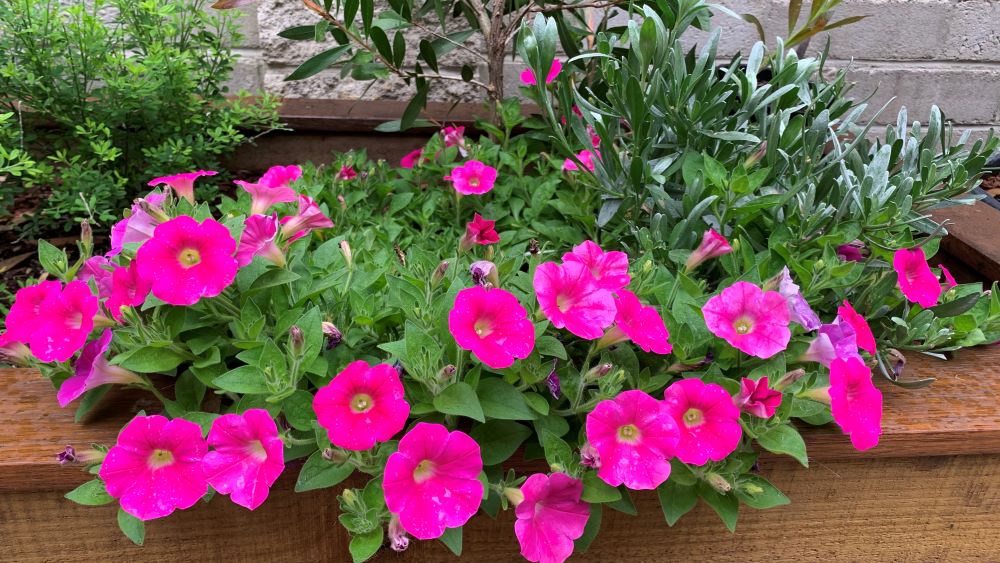
Signs of Overwatered Petunias | Summary
Petunias can show signs of being overwatered which are easy to spot. Look out for drooping leaves, moldy soil, damaged flowers and yellowing leaves. The easy solution is to mulch, add some liquid fertilizer and to protect potted petunias from extra rain by putting them undercover.
Move the petunias back out into full sun once the rain has passed and they will recover quickly.
Happy growing.
I am an accredited practicing dietitian, experienced gardener and a dedicated cook. I love writing and sharing my experience so you can learn from my successes and mistakes.
